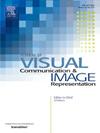DBFAM: A dual-branch network with efficient feature fusion and attention-enhanced gating for medical image segmentation
IF 2.6
4区 计算机科学
Q2 COMPUTER SCIENCE, INFORMATION SYSTEMS
Journal of Visual Communication and Image Representation
Pub Date : 2025-03-17
DOI:10.1016/j.jvcir.2025.104434
引用次数: 0
Abstract
In the field of medical image segmentation, convolutional neural networks (CNNs) and transformer networks have garnered significant attention due to their unique advantages. However, CNNs have limitations in modeling long-range dependencies, while transformers are constrained by their quadratic computational complexity. Recently, State Space Models (SSMs), exemplified by Mamba, have emerged as a promising approach. These models excel in capturing long-range interactions while maintaining linear computational complexity. This paper proposes a dual-branch parallel network that combines CNNs with Visual State Space Models (VSSMs). The two branches of the encoder separately capture local and global information. To further leverage the intricate relationships between local and global features, a dual-branch local–global feature fusion module is introduced, effectively integrating features from both branches. Additionally, an Attention-Enhanced Gated Module is proposed to replace traditional skip connections, aiming to improve the alignment of information transfer between the encoder and decoder. Extensive experiments on multiple datasets validate the effectiveness of our method.
DBFAM:一种具有高效特征融合和注意力增强门控的双分支网络,用于医学图像分割
在医学图像分割领域,卷积神经网络(convolutional neural networks, cnn)和变压器网络(transformer networks)因其独特的优势而备受关注。然而,cnn在建模远程依赖关系方面存在局限性,而变压器则受到其二次计算复杂度的限制。最近,以Mamba为例的状态空间模型(SSMs)作为一种很有前途的方法出现了。这些模型擅长捕捉远程交互,同时保持线性计算复杂性。本文提出了一种将cnn与视觉状态空间模型(VSSMs)相结合的双分支并行网络。编码器的两个分支分别捕获本地和全局信息。为了进一步利用局部和全局特征之间的复杂关系,引入了双分支局部-全局特征融合模块,有效地整合了两个分支的特征。此外,提出了一种注意力增强门控模块来取代传统的跳过连接,旨在提高编码器和解码器之间信息传输的一致性。在多个数据集上的大量实验验证了我们方法的有效性。
本文章由计算机程序翻译,如有差异,请以英文原文为准。
求助全文
约1分钟内获得全文
求助全文
来源期刊

Journal of Visual Communication and Image Representation
工程技术-计算机:软件工程
CiteScore
5.40
自引率
11.50%
发文量
188
审稿时长
9.9 months
期刊介绍:
The Journal of Visual Communication and Image Representation publishes papers on state-of-the-art visual communication and image representation, with emphasis on novel technologies and theoretical work in this multidisciplinary area of pure and applied research. The field of visual communication and image representation is considered in its broadest sense and covers both digital and analog aspects as well as processing and communication in biological visual systems.
 求助内容:
求助内容: 应助结果提醒方式:
应助结果提醒方式:


